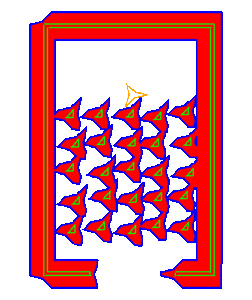
The Minkowski sum (also known as the vector sum) of two sets \(P\) and \(Q\) in \(\mathbb{R}^2\) is the set \(\{p+q | p \in P, q \in Q\}\). Minkowski sums are useful in robot motion planning computer-aided design and manufacturing (CAD/CAM) and many other areas. We present a software package for robust and efficient construction of Minkowski sums of planar polygonal sets. We describe the different algorithms that we implemented and an experimental comparison between them. A distinctive feature of our implementation is that it can accurately handle degenerate input and in particular it can identify degenerate “holes” in the Minkowski sum which consist of a line segment or a singular point. Several algorithms for computing the Minkowski sum of two polygons in the plane begin by decomposing each polygon into convex subpolygons. We examine different methods for decomposing polygons by their suitability for efficient construction of Minkowski sums. We study and experiment with various well-known decompositions as well as with several new decomposition schemes. We report on our experiments with the various decompositions and different input polygons. Among our findings are that in general: (i) triangulations are too costly (although they can be produced quickly, they considerably slow down the Minkowski-sum computation), (ii) what constitutes a good decomposition for one of the input polygons depends on the other input polygon—consequently, we develop a procedure for simultaneously decomposing the two polygons such that a “mixed'” objective function is minimized, (iii) there are optimal decomposition algorithms that significantly expedite the Minkowski-sum computation, but the decomposition itself is expensive to compute—in such cases simple heuristics that approximate the optimal decomposition perform very well.
